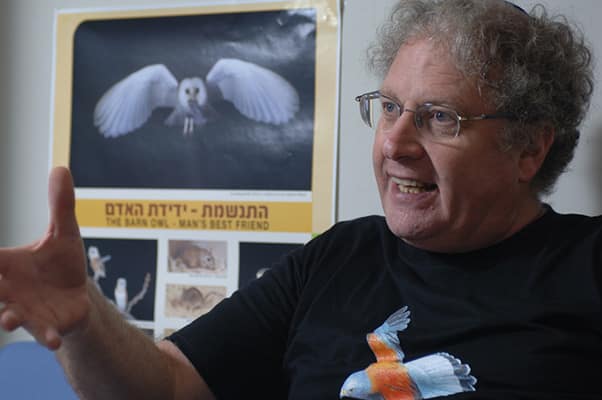
Unless you are Israeli or a keen bird-watcher, you have probably never heard of him. But not only is he legendary as the Bird-Man of Israel, Yossi Leshem has also quietly saved lives.
After serving in the Israeli Air Force, Yossi, a bird enthusiast, set up a field school in Har Gilo, south of Jerusalem. He went on to become the director of the Israel Society for the Protection of Nature and developed the necessary means that would ensure the conservation of the rare Bonelli’s eagle and the frankly less attractive, Lappet-faced vulture. Thanks to his studies, these rare birds of prey are once again breeding safely and securely in Israel.
When Israel withdrew from Sinai in 1982, the Israeli airspace needed for Air Force exercises, shrunk substantially. But what did not shrink, were the 500 million birds flying through the skies twice a year on their way to and from Europe and Africa. These feathered friends flying now in a more crowded Israeli airspace collided into plane engines. Their migrations brought down 9 military planes, caused 75 accidents (with costs incurred of half a million dollars each), and thousands more accidents of various relative costs. Most tragically of all, birds flying into plane engines caused the death of three 3 Israeli pilots.
To enable safe passage for both bird and man alike, Yossi Leshem set up a think tank to combat the problem. His team consisted of ornithologists, the Israeli Air Force, Tel Aviv University, the Israel Society for the Protection of Nature and the Ministry of Science, Technology and Space.
For 270 days Leshem went up in a glider to map the routes and altitudes of the various bird species migrating through Israel’s skies. UAV’s and radar detection were also his tools. The result was a successful surveillance which he later used to alert the Air Force of the oncoming feathered army. The success of the mission saw a 76% reduction in collisions, over $730 million saved, and no loss of human life.
The mapping not only points to the enterprise of Yossi Leshem, who was the well-deserved recipient of a Lifetime Achievement Award for Environmental Protection, it also speaks volumes about the ingenuity of birds. Like people, birds too are creatures of habit. Just as we leave at a particular time to go to work, and take a certain train or bus, birds (metaphorically) do too. Like someone heading to the office day in and day out, each species chooses a route, an altitude and a traveling speed.
Another Leshem project that caused many to marvel at the wonders of creation involved storks. These large birds fly over Israel twice a year in such vast numbers they often block out the sun. Using satellite-tuned transmitters, Yossi tracked a pair. Released in Germany, the male stork traveled to Spain while his female partner, flew via Israel to South Africa.
Nine months later, the birds returned to their original European nest. Arriving first, the male prepared the home for his beloved who followed shortly after. For nine years these two extraordinary birds set off on their different paths, but without fail came back to find each other among hundreds of thousands of their friends to nest together again.
Leshem also used birds as a natural form of pest control against rodents who chomp their way through valuable crops. On different farmland, he set up around 2,000 nesting boxes for kestrels and owls. The kestrels do the “day shift,” and the owls take the night. The non-chemical pest control did not damage the crops and the plenty of available rodent delicacies spiked a growth in the population of these treasured birds.
Leshem’s achievements are remarkable. He not only saved the lives of pilots and birds, or saved the state of Israel millions of dollars, he also ensured a safer crop by opting for natural pesticides in the form of his feathered friends.
First published here



